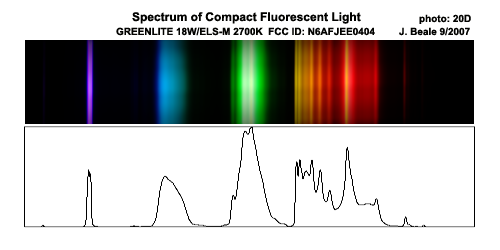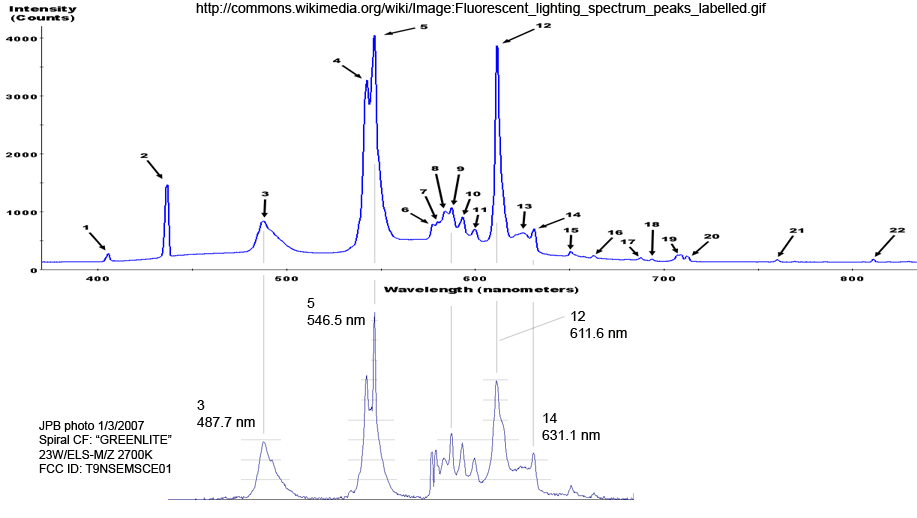I bought a compact fluorescent light recently to replace an incandescent desk lamp. Suddenly, I noticed "Newton's rings" type interference patterns wherever I have thin pieces of transparent plastic over each other (eg, when looking at my 35mm negatives, stored in plastic sleeves). Why?
I figured I'd whip together a quick spectrograph, since I had some pieces of diffraction grating around (Edmund Scientific D1,307: pkg of 15 Viewers, 2"x2" cardboard (slide) mount, 23,000 grooves per inch). I put that on one end of a 14" cardboard tube, lined with black felt, and put a slit formed from two razor blades on the other end.
I took a photo through this crude instrument with my DC120 digital camera, which is reproduced above. (I used "uncompressed" mode, and after downloading reduced the raw camera resolution by 2:1, cropped, and applied a gamma of 1.5 to make the fainter lines more visible on my monitor.)
You can see the first and second order diffraction lines in the photo. Sure enough, the fluorescent only puts out a few strong emission lines, which make interference patterns noticible on my desktop which weren't before.
The fluorescent light has three parallel U-shaped tubes (3-3/4" length exposed) on a standard bulb thread and electronic driver circuit in the base. It is about 7" long overall, and is marked "GE BIAX(tm) Electronic 23W 120VAC 60 Hz 390 mA FLE23TBX/SPX27 (UL) FCC ID:BLD23HLS" on the base. It is supposed to replace a 95 watt incandescent in light output.
9/18/2007 Here is another photo taken with a Canon 20D camera, using a
polyester holographic
grating of 19,050 lpi (750 lines/mm). This grating material is sold by ScienceFirst as of 10/2/2010.

GREENLITE 18W / ELS-M 2700K 120V 60Hz 290mA
FCC ID:N6AFJEE0404 Not for use with dimmers Q44
C UL US LISTED 22KJ SELF-BALLASTED LAMP E176533 ENERGY STAR.


The sharpest CF spectrum features are Hg emission lines. Blue: 405.4 nm Bright Purple: 436.6 nm Brightest Green: 546.5 nm